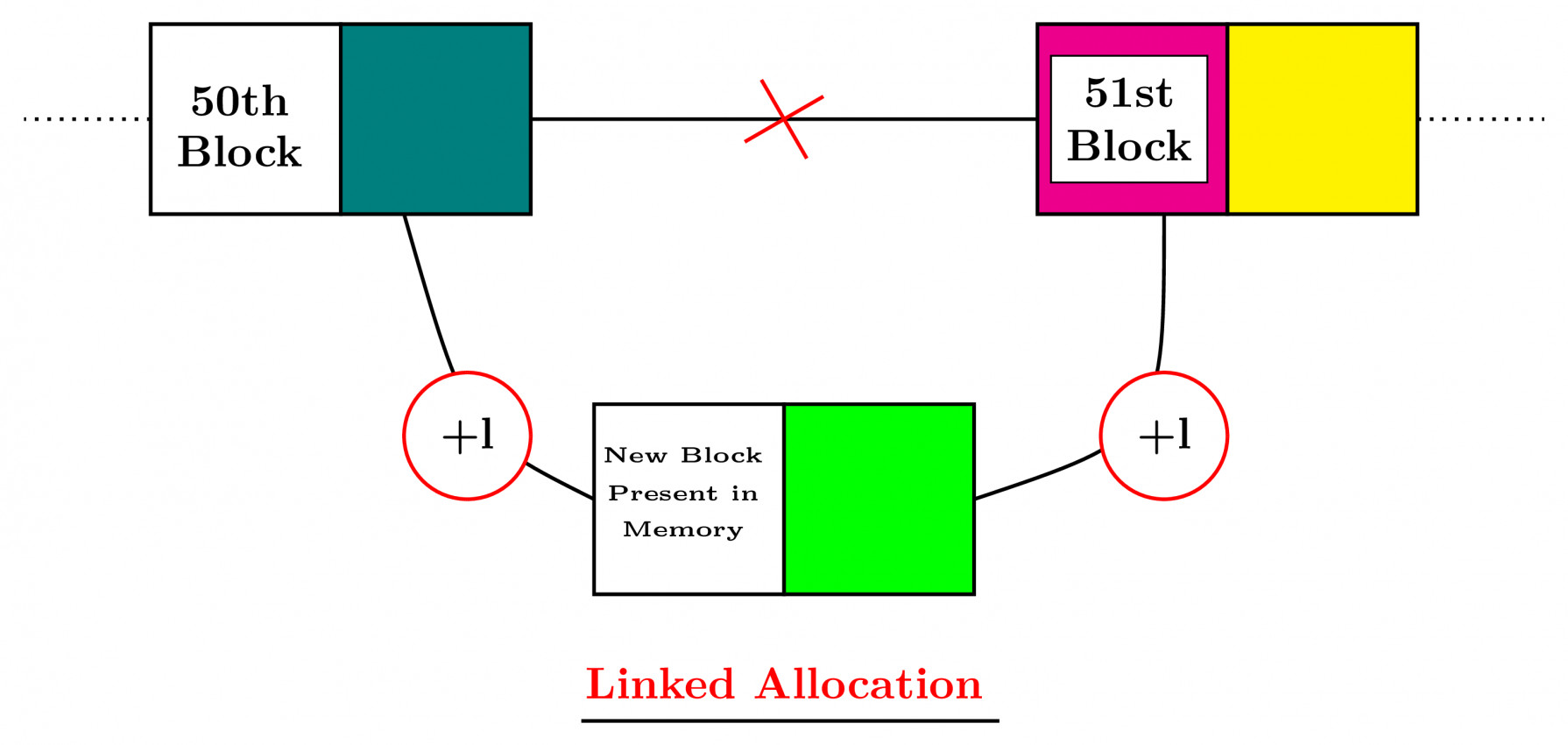$\underline{\underline{\textbf{Answer: 153}}}$
$\underline{\underline{\textbf{Explanation:}}}$
$$\color{blue}{\enclose {circle}{\color{magenta}{\text{ -No Free blocks- }}}}\textbf{1, 2, 3,..,49, 50, } \enclose{circle}{\color{red}{\textbf{New Block}}} \textbf{, 51, 52, …,99, 100, ... }\color{green}{\underline{\underline{\textbf{ Free Blocks ... }}}}$$
$\textbf{Contiguous Allocation:: }$
In case of $\mathbf{Contiguous}$ allocation we can directly go to the $50^{\textbf{th}}$ element. After this, we have to insert a block here, and since the allocation is $\textbf{Contiguous}$, therefore you need to shift all the remaining $50$ blocks $\color {red}{\text{to the right.}}$ [As enough free blocks are available to the right and no free blocks are available in the beginning, so we can only shift the blocks to he right only].
So, $ 50\text{ Read Operations } + {50 \text{ Write Operations}} + \mathbf{1}\;\text{[1 operation to write a newly inserted block]} = 101\; \text{ Operations in Total.}$.
Also, we know from the Contiguous Memory allocation concept that overwriting an element simply means deleting it. Therefore, we don't have to worry about deleting an element specifically. We can just overwrite them, thus saving the cost of operations.
$\textbf{Linked Allocation:: }$
In $\textbf{ Linked Allocation }$, $50\text{ operations to read first 50 elements }$, $2\; \text{operations}$ are needed to delete the next pointer of the $50^{\textbf{th}}$ element, connect that link to the block which is to be inserted, and then connect the next pointer of that block to the $51^{\textbf{st}}$ element. This takes $\textbf{2 operations.}$
So, Total $\mathbf{52}$ operations are needed in this case.

$\color{red}{\textbf{Note:}}$
- The statement “The file Control Blocks are already there in memory “ means the information regarding the file structure is already present in the memory. (Eg: index block in the case of indexed allocation is already present in memory.)
- $\text{I/O Operations or Operations or Read & Write Operations or Disk Accesses, }$ all of them simply represent the same thing.